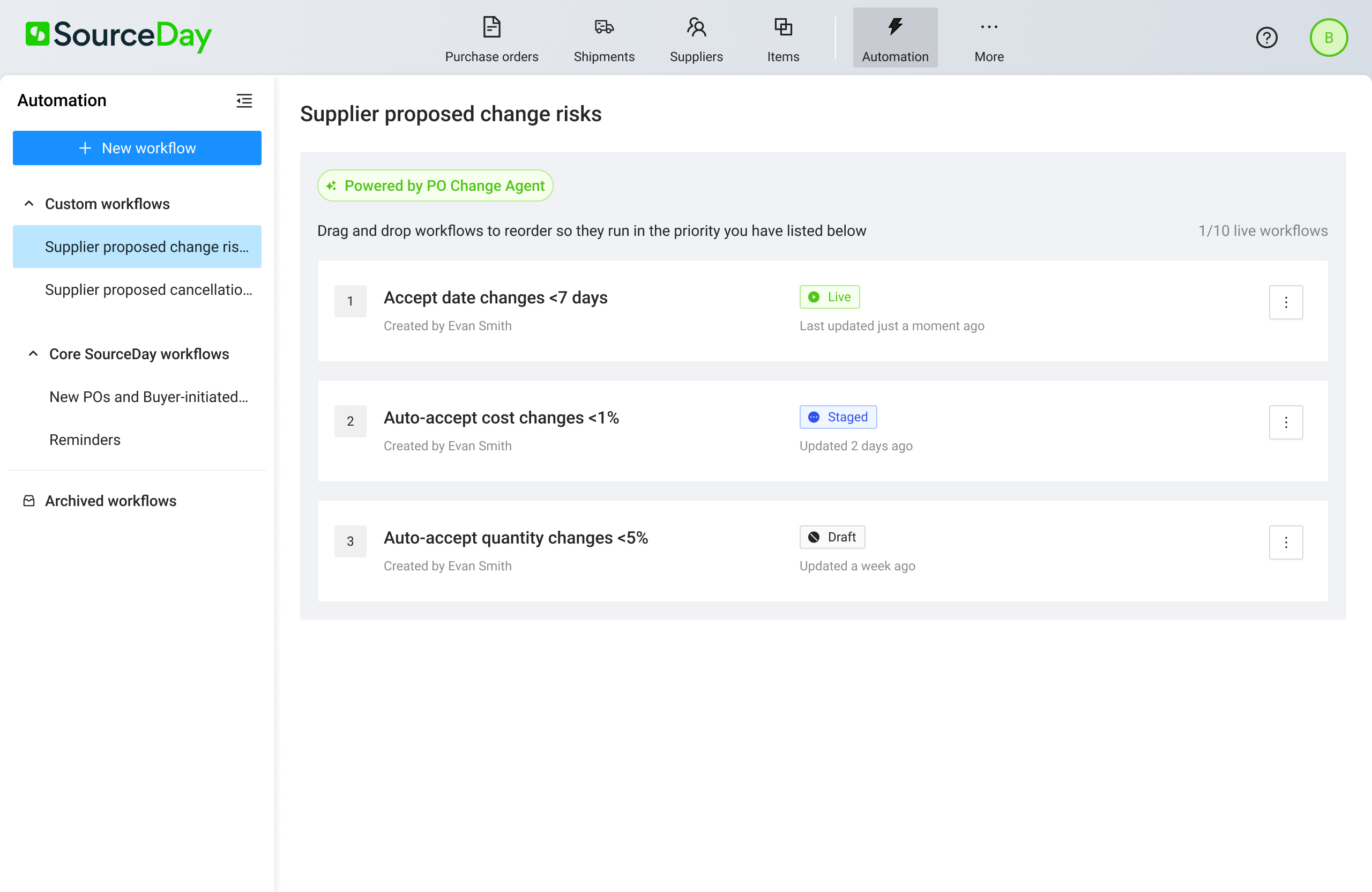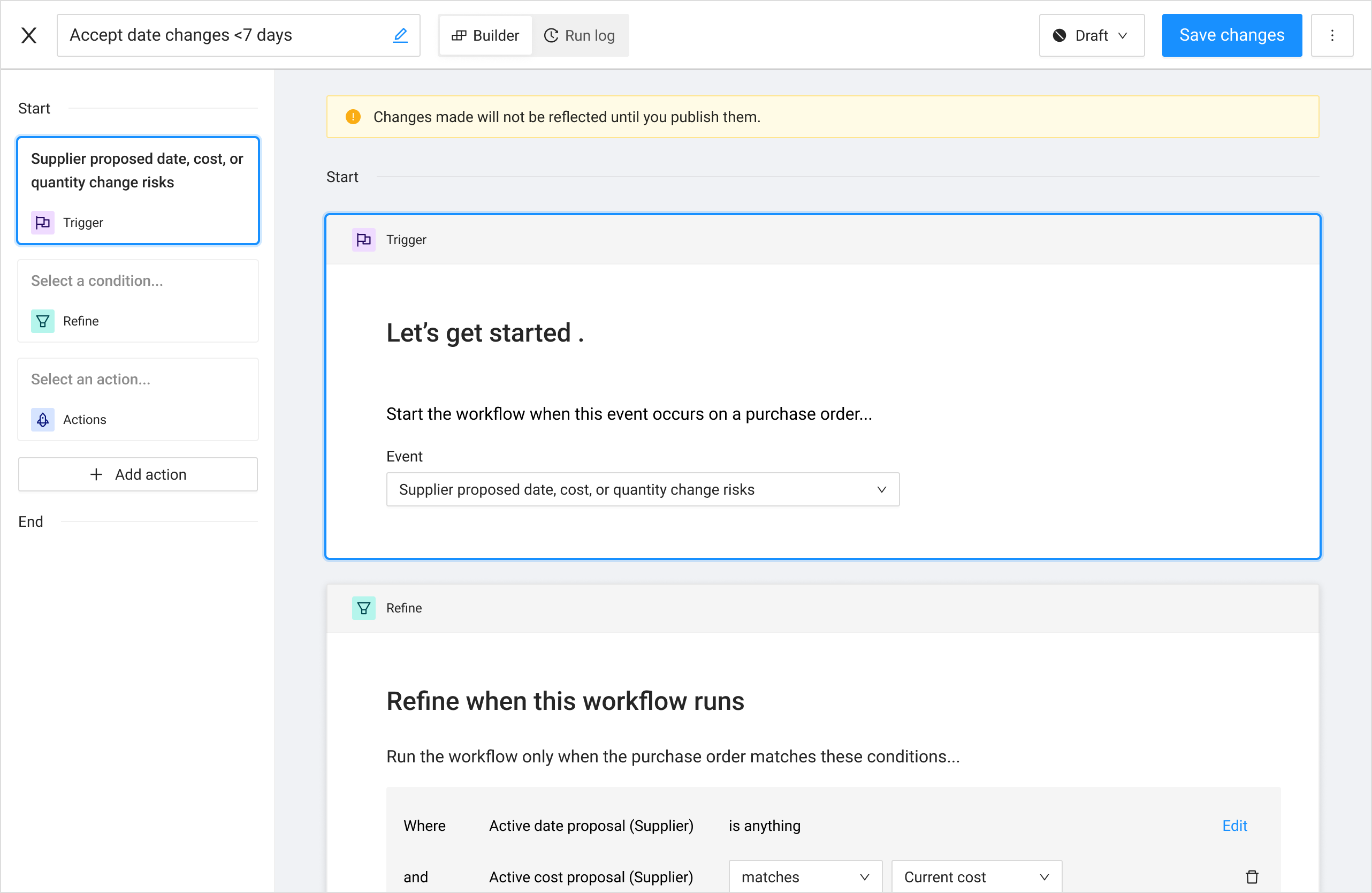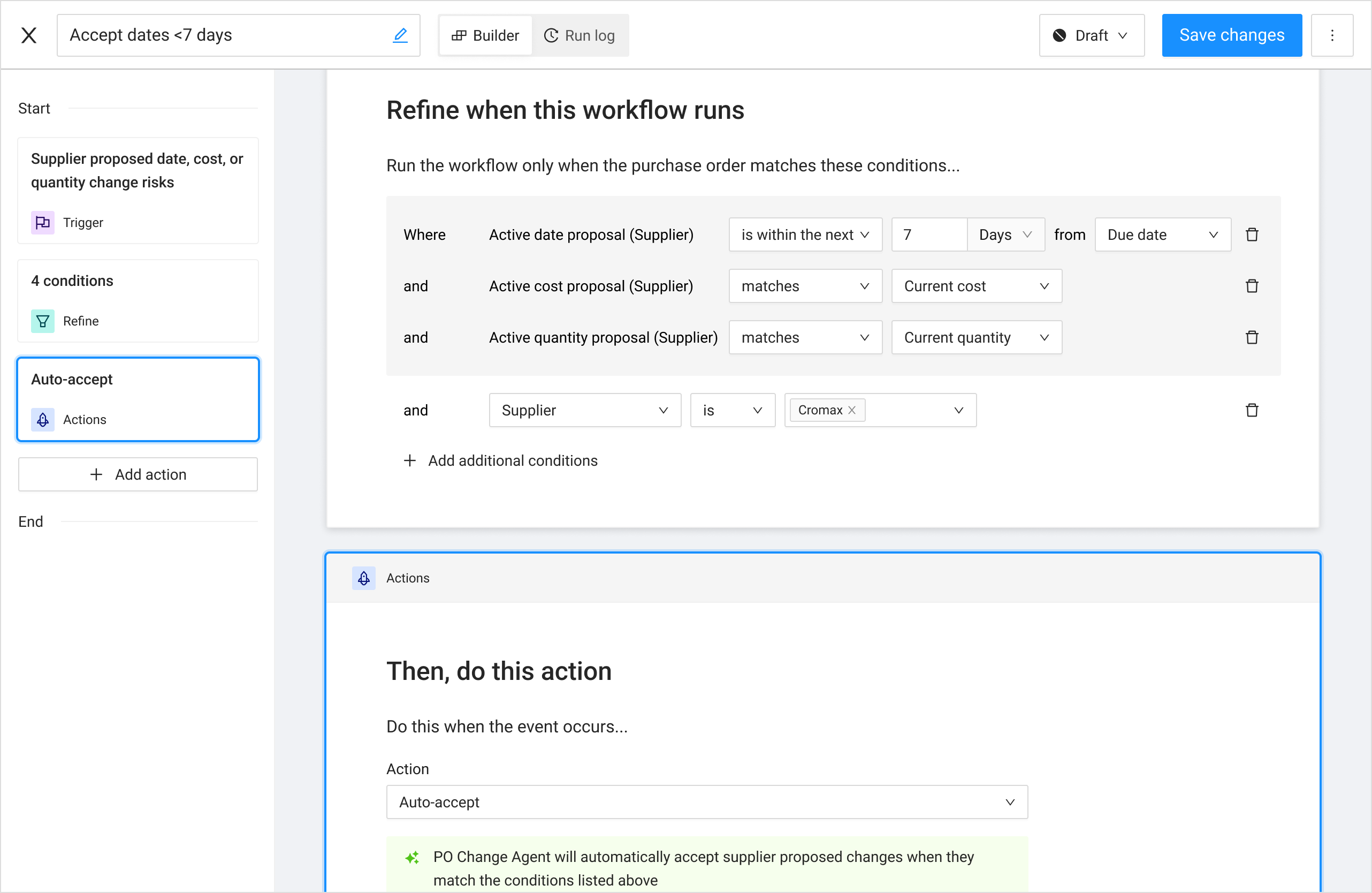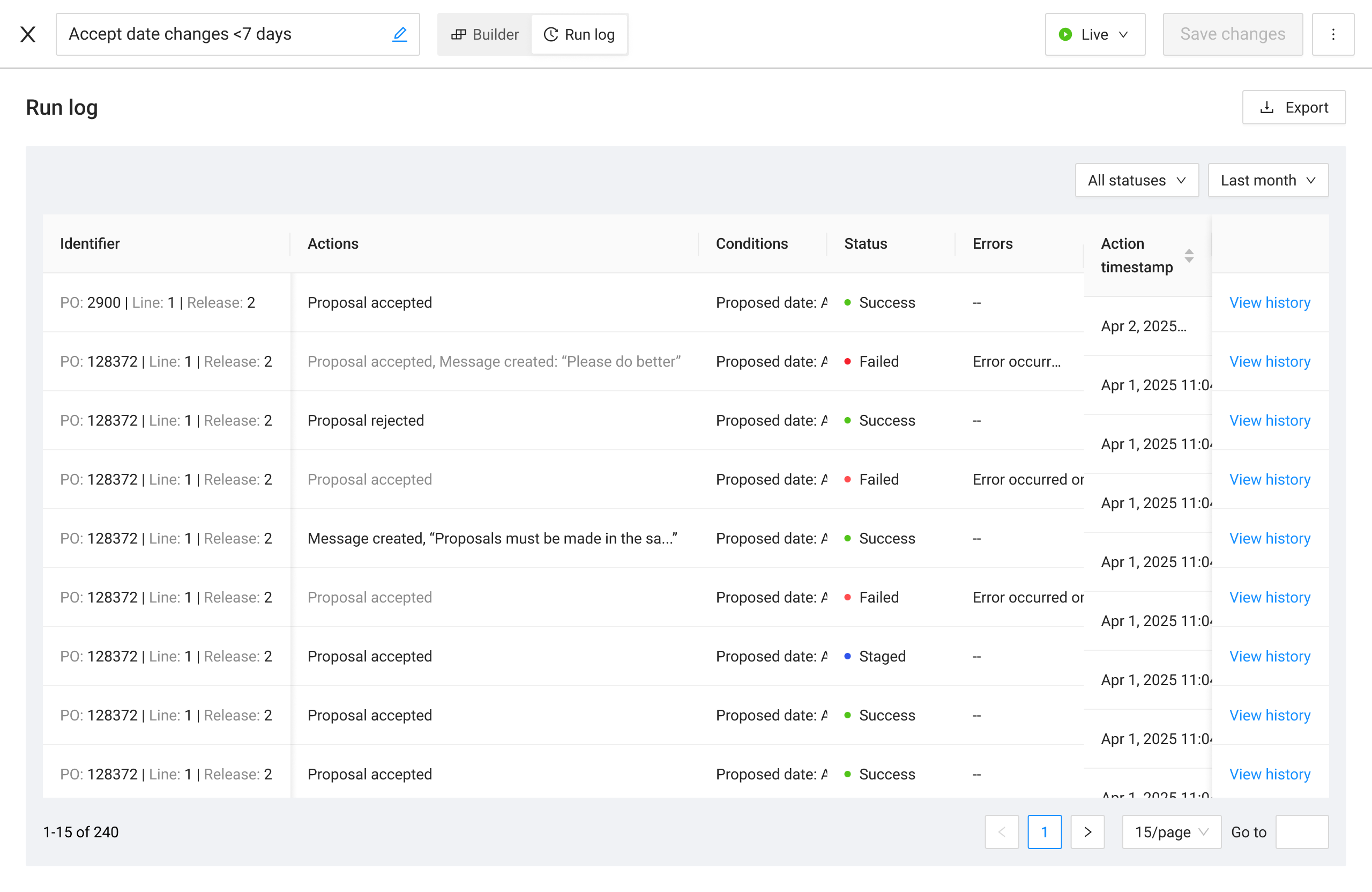Less busywork. More breakthroughs.
SourceDay’s custom automation engine allows procurement teams to shift their energy from repetitive tasks to impactful initiatives.
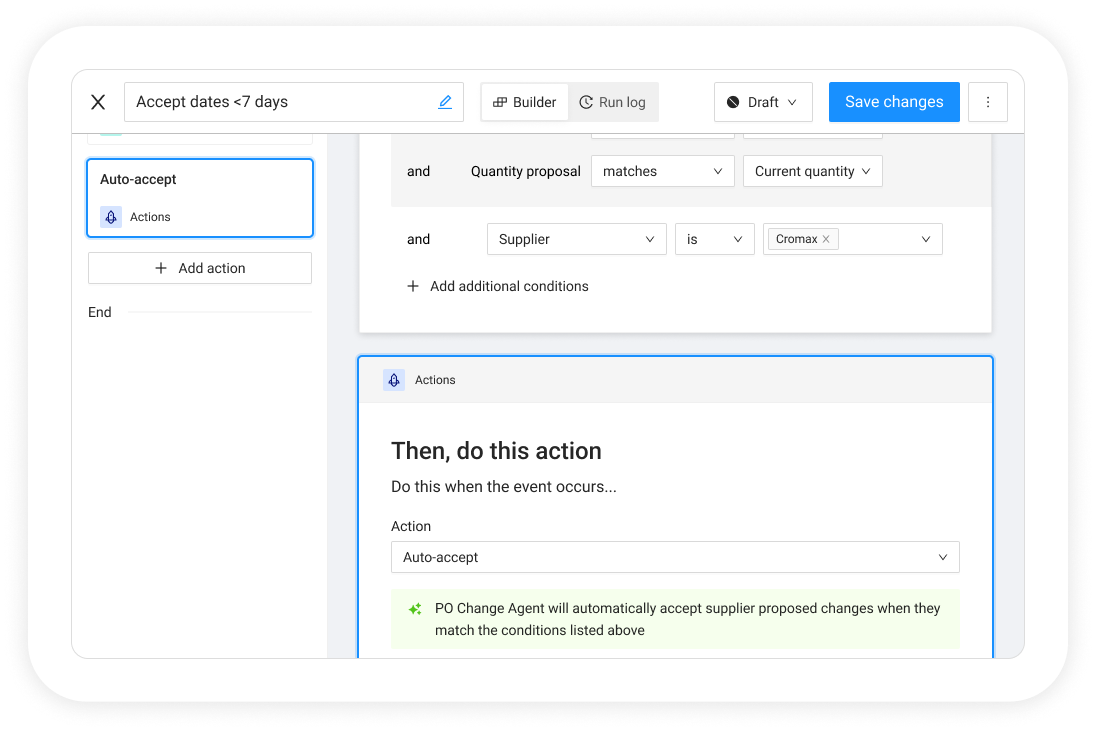
Before SourceDay
A typical buyer manages hundreds (sometimes thousands) of POs per year. Every order requires multiple manual touchpoints across emails, phone calls, spreadsheets, and ERP edits.
- 88% of POs require 2+ interventions
- 35% of POs get buyer-initiated changes and 15% receive supplier-initiated changes
- 37% are late – triggering even more reactive work
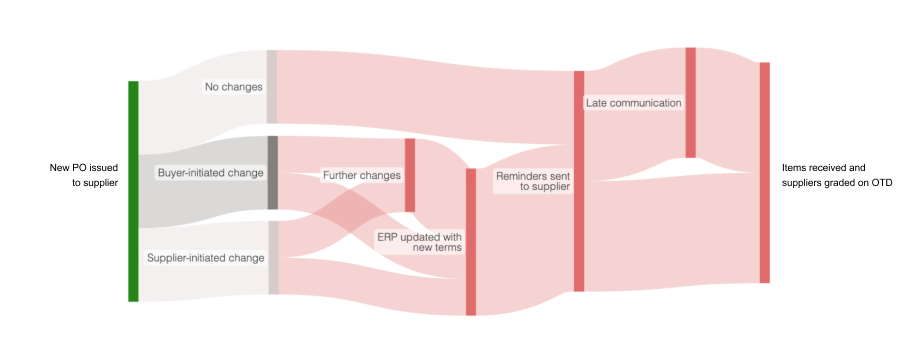
The opportunity with SourceDay automations
By automating routine interactions throughout the PO process, SourceDay helps buyers prioritize high-impact orders and reduce time spent on low-risk tasks.
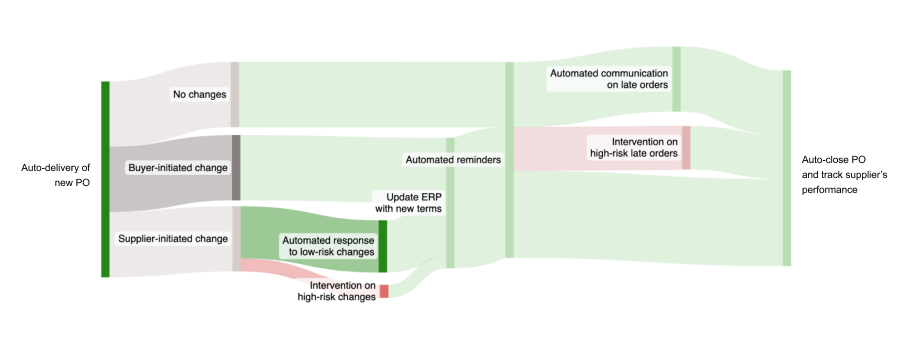
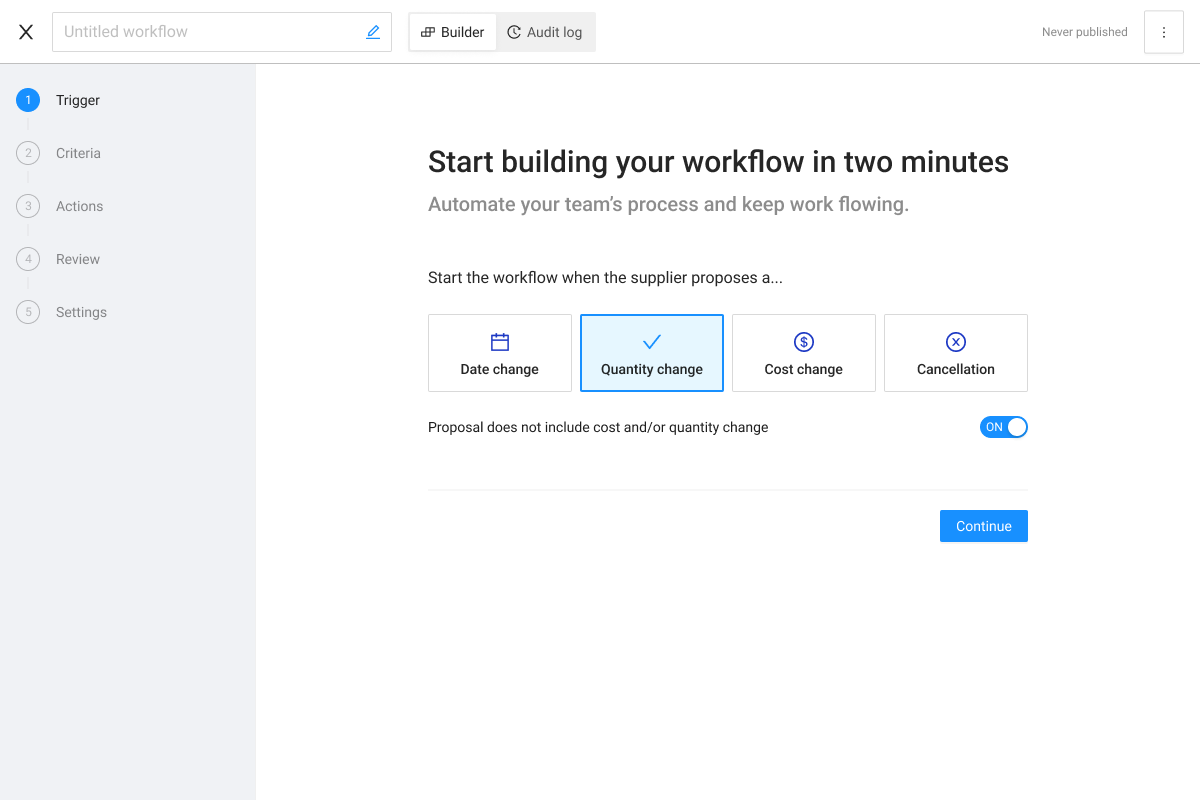
Early concept 1
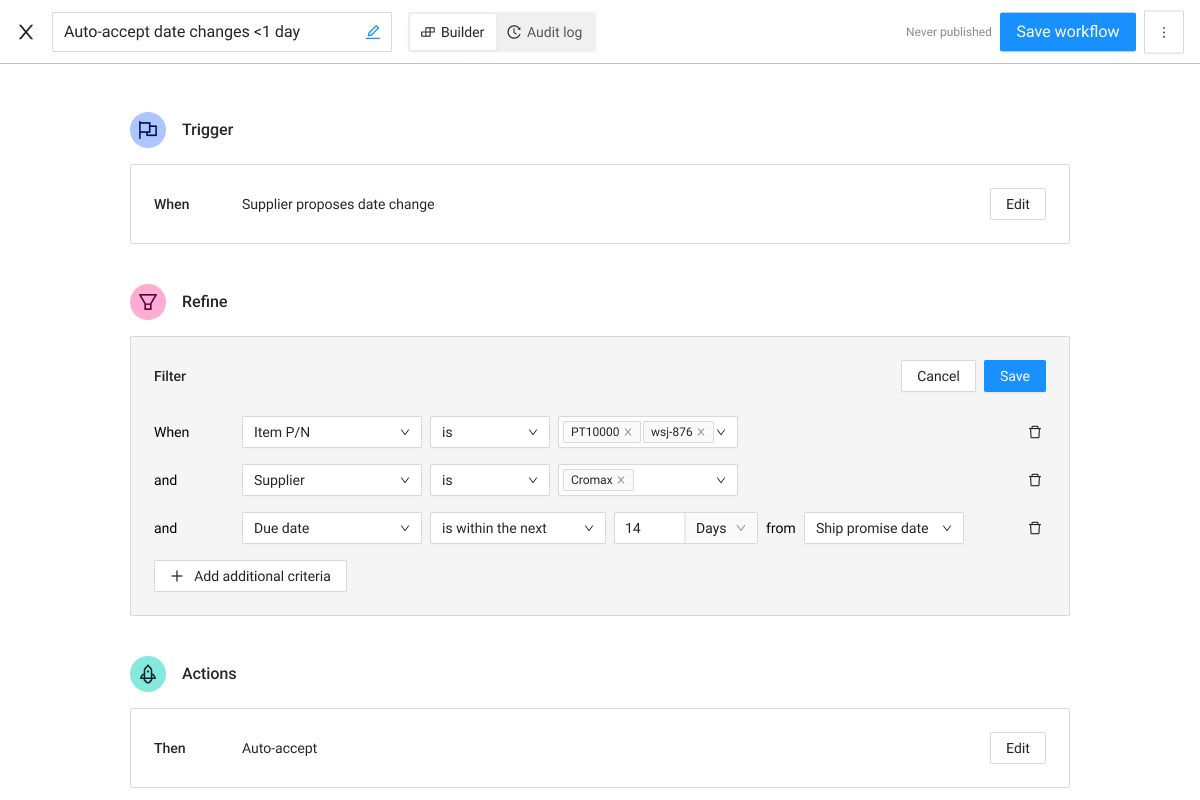
Early concept 2
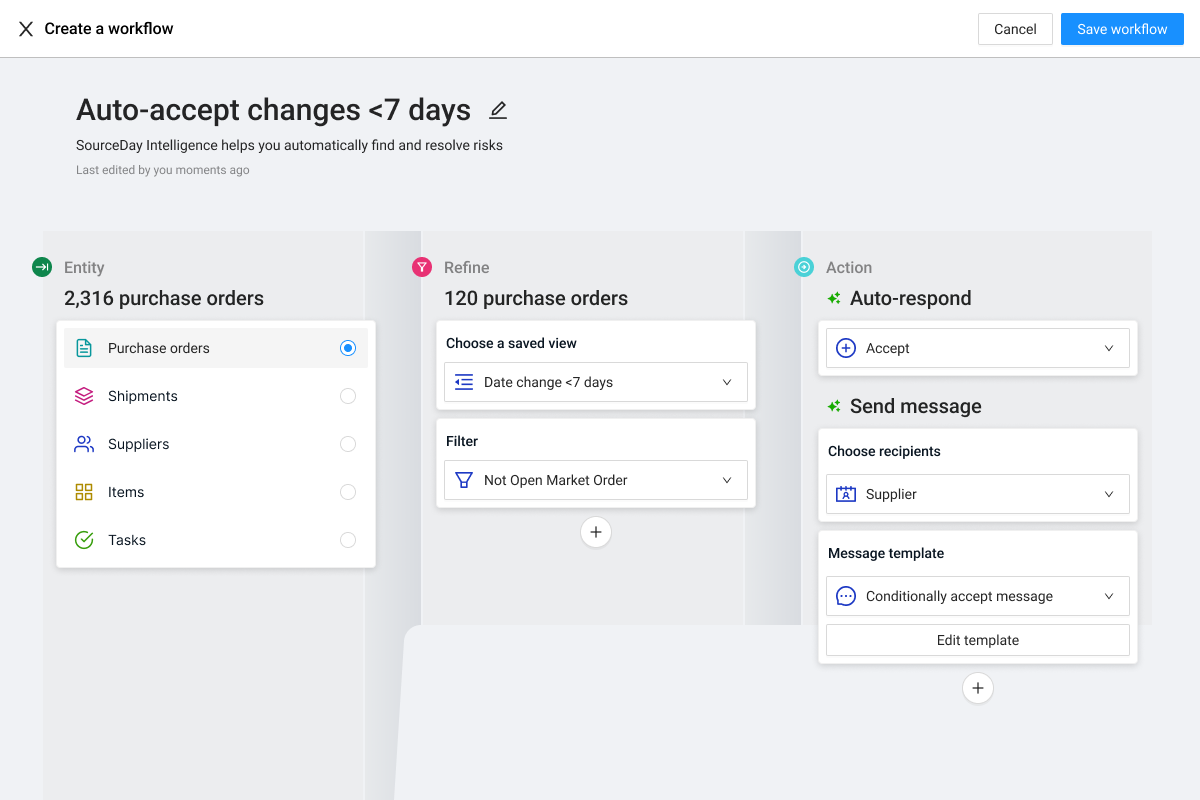
Early concept 3
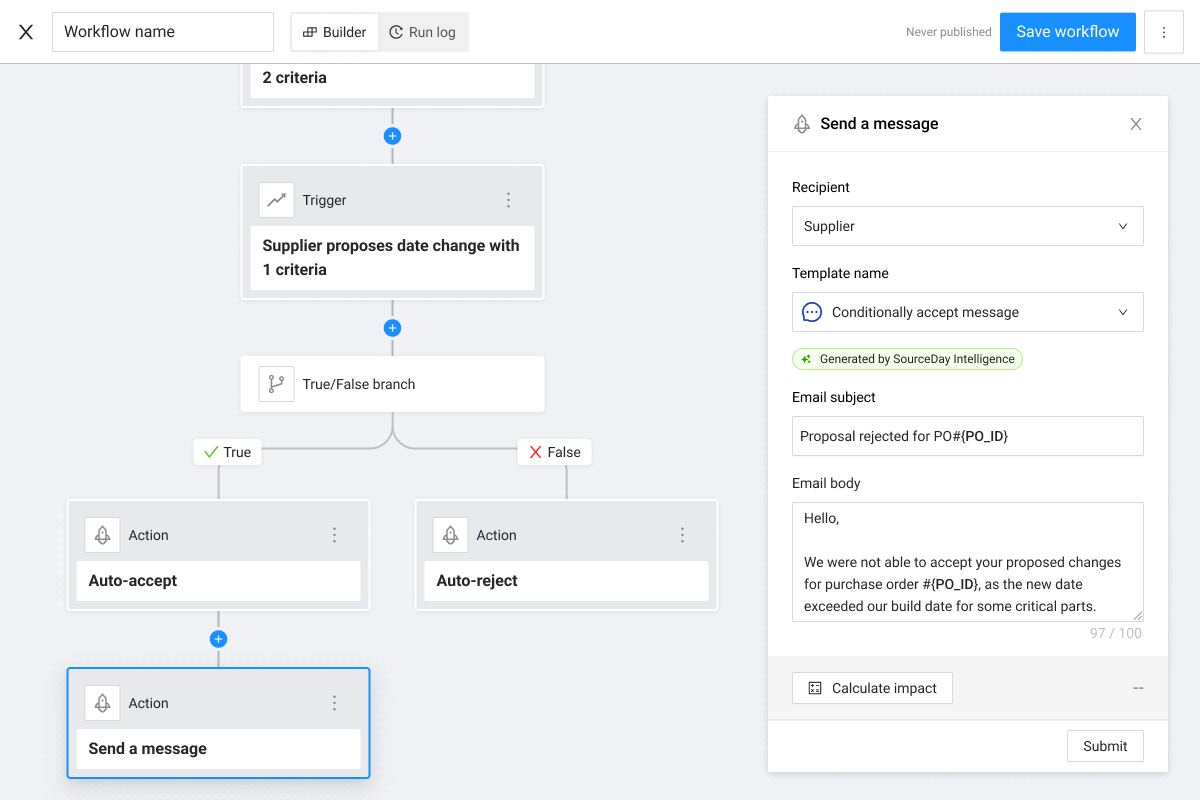
Early concept 4
